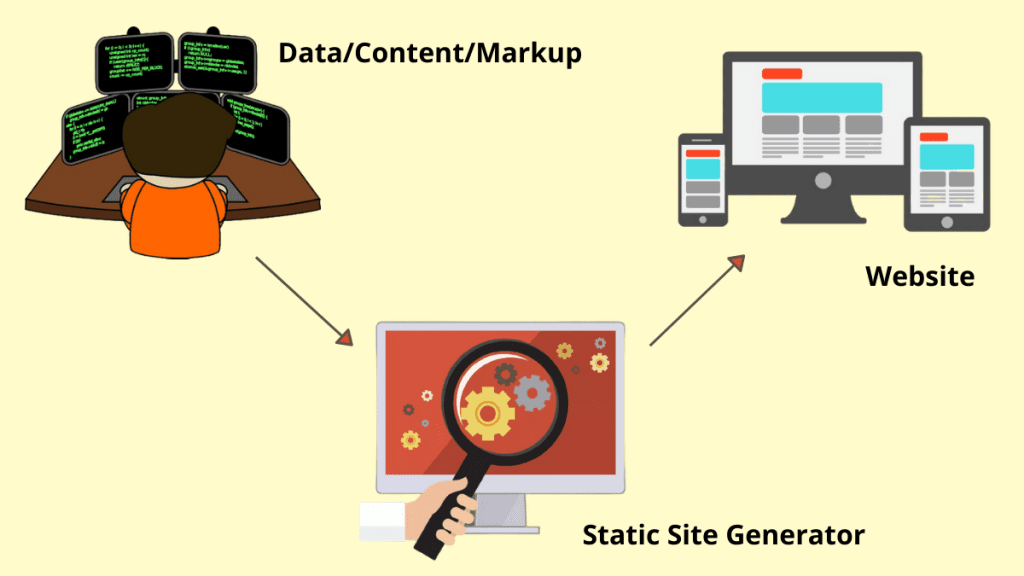We all know the growth of websites in the last 2-3 decades. The website grew exponentially and more and more content started appearing in web content format. Various rich media got embedded into web content. But quickly it also made the website bulky and slow.
Modern web content need to be loaded almost instantly since most of the users are accessing web content from their smartphones.
What is Static Site Generator (SSG)?

Static site generators take some sort of input (HTML, CSS, images, data), run it through some sort of template, and spit out a complete, finished website without a traditional web server. A static site generator is an alternative to a traditional content management system (CMS). It’s a great option for certain types of sites, like blogs and corporate sites, where all of the content is generated by a single person. It’s also a good option for sites with a small amount of content that doesn’t need to be updated frequently.
So there are many benefits of using static site generators when your site meet certain criterias.
There are many different types of static site generators. They are available in probably most of the modern web programming languages and frameworks.
PHP is a widely used language to code modern web site. If you happen to work in PHP and need a PHP Static Site Generator then keep on reading.
We created a list of 13 best PHP static site generators.
1. Katana
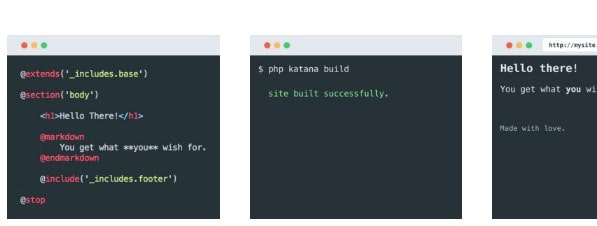
Katana is a static site generator for PHP. It uses the Twig templating engine and Markdown for content. The name Katana comes from the Japanese word meaning “sword” and is a tribute to the code name of the original Xbox, which was codenamed “Katana”.
2. Handle

Handle is a php static site generator. It’s designed to be easy to use. Handle is designed for people who want to manage their content and not spend time with configs. Handle uses pure PHP and HTML. The result is a fast and easy way to create a website.
3. Couscous

Couscous is a PHP static site generator. It is a project made with the intent to make it easy to generate a static website with PHP. It is created with simplicity in mind, and is not meant to compete with more powerful static site generators like Jekyll. It is targeted to people who don’t want to mess with the command line.
4. Sculpin

Sculpin is a static site generator written in PHP. It is designed to juggle heavy full-page loads while maintaining a high degree of flexibility and agility. It’s not a content management system, or a blogging platform, or WYSIWYG, or a traditional web editor. Sculpin is a tool to help you make a website.
Sculpin is a static site generator. Static site generators are tools for generating content for the web. This means that your site doesn’t use a database, doesn’t generate HTML pages upon request, and doesn’t require a server to function.
5. Octopress

Octopress is a static site generator written in Ruby that’s powered by a blog engine, Octopress itself. Octopress generates static HTML files with all of your blog posts, pages, and other content. Octopress is the best system for quickly getting a blog up and running. It’s also the perfect system for deploying to a CDN for fast, worldwide, content delivery. Octopress is open-source and available on GitHub.
6. Jekkyll
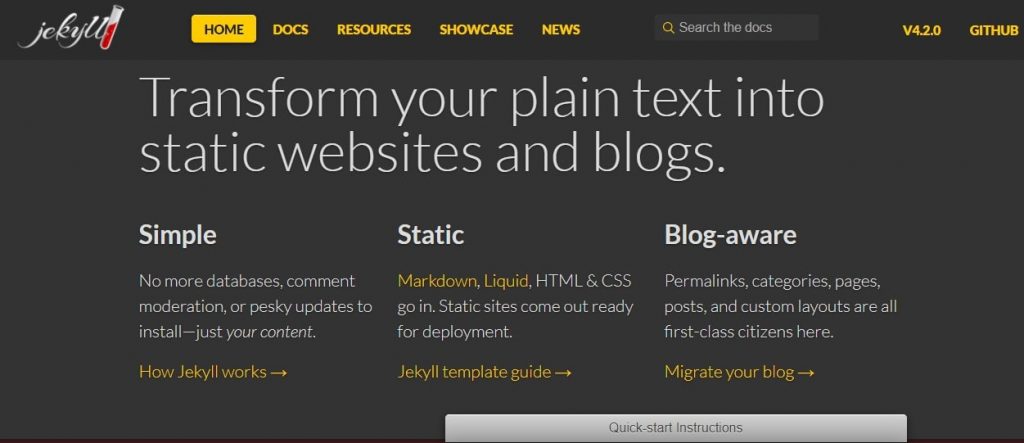
Jekyll is a great static site generator: It takes your content, runs it through a processor, and spits out a complete, ready-to-publish website. For a long time, I was a fan of WordPress, but found myself frustrated with the more complex features. I was looking for a simpler, more streamlined way to publish my thoughts, and found it in Jekyll. Here are the best features of Jekyll.
7. Datenstrom

Datenstrom is a PHP static site generator designed to generate a blog. It is built on the shoulders of giants like Jekyll and Hugo. Datenstrom is intended to be used to build blogs of any size. Datenstrom is a command line utility. The admin interface is a web interface. Datenstrom is designed to be used in a Unix environment with the following software installed: –
php7.0 – git – composer – python3 – node.js – npm – mongodb
8. Carew
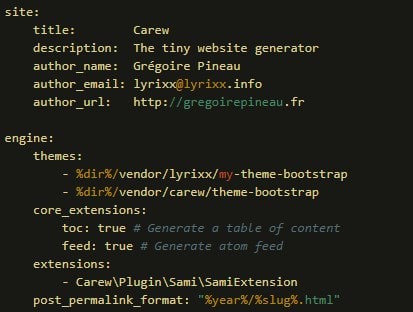
Carew is a lightweight PHP static site generator. Powered by the command line, you can build a new blog in a matter of minutes because all the heavy lifting is done for you. There’s no database to setup, no dependencies to install, and no restrictions.
9. Phpoole
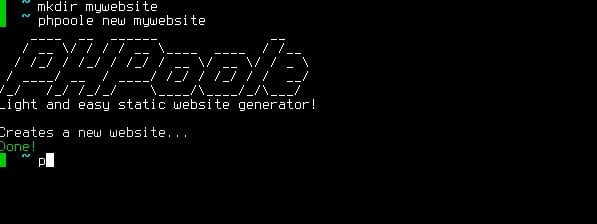
It’s never been easier to create a beautiful static website, blog, or online store with Phpoole. Phpoole is a new PHP static site generator that makes things easy for you. Phpoole is a PHP static site generator that allows you to create web pages that can be served with a simple web server. Phpoole is designed for simplicity. It is designed so you don’t need to be a programmer to use it.
10. Jigsaw – PHP Static Site Generator
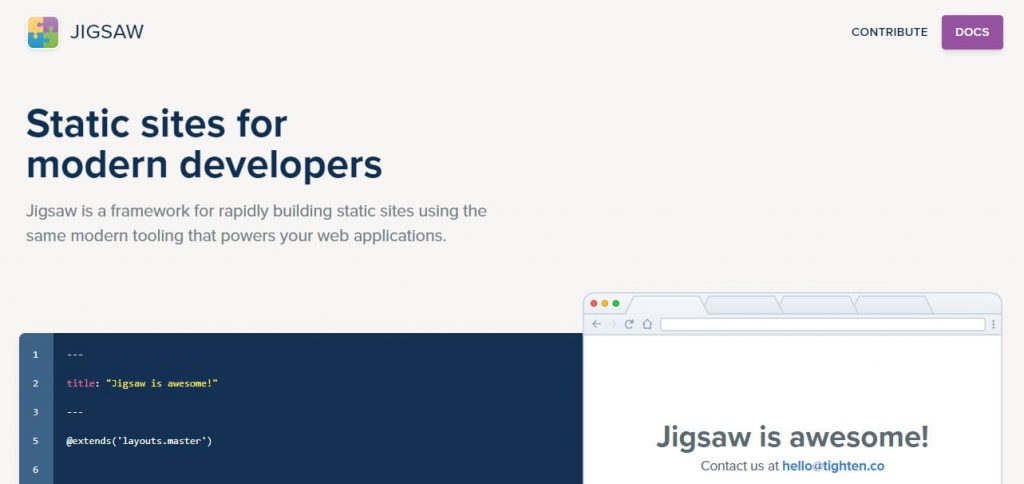
Jigsaw is a static site generator that generates static html files from dynamic data. It does so by defining a set of chunks, which are lists of data, and writing out the html for each chunk. For example, if we had a blog, we would have a chunk for the latest article, a chunk for the latest comments, a chunk for the sidebar, etc.
Jigsaw is written in PHP, and the chunks can be as simple as a text file or as complicated as a database. The only requirement is that data files contain a YAML front matter block with the chunk’s metadata.
11. Spress – PHP Static Site Generator

Spress is a statis site generator in PHP. It allows you to deploy your blogs, personal portfolio sites or company sites. The great thing about Spress is that you can customize it by creating or using existing plugins and themes.
You can also create amazing templates by using Twig template engine.
12. Statie – PHP Static Site Generator
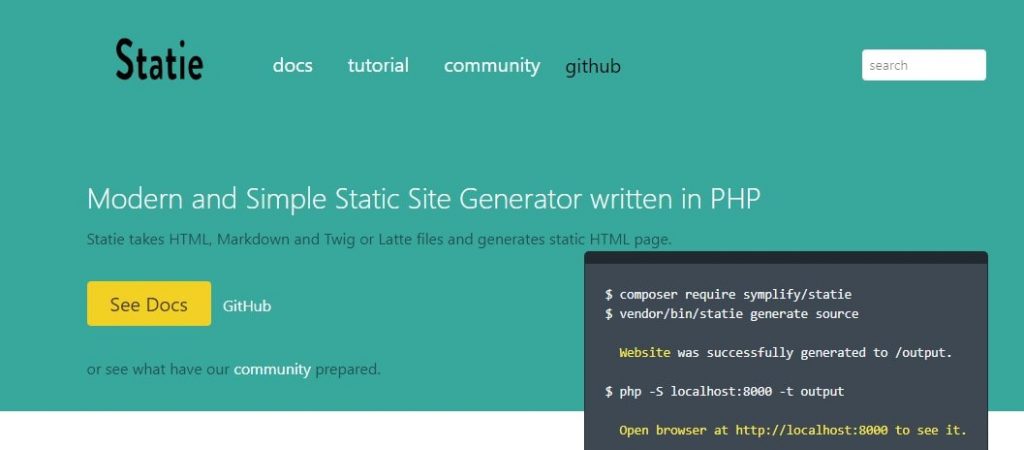
Statie is a modern and simple PHP static website generator. It supports markdown and also support template using twig or latte.
It also supports Symphony-like YAML configuration files to set globally accessible parameters and service auto wiring.
